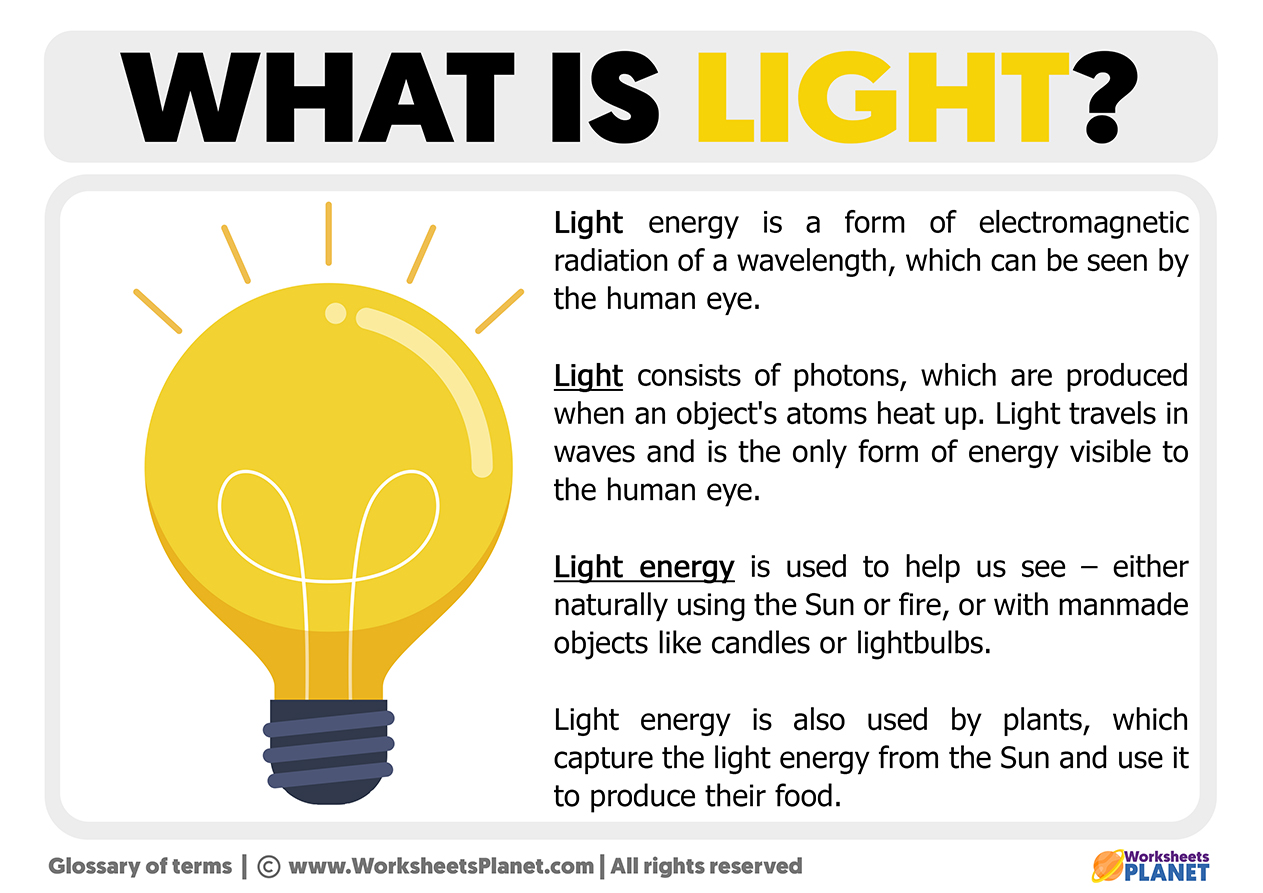Light and the phenomena associated with it have always stimulated the curiosity of human beings. For many thousands of years, the main source of light that human beings had was the Sun. Candles were invented later.

Light is electromagnetic radiation visible to our eyes. We can describe this radiation by considering a corpuscular model or a wave model. In the first case, we can assume that light is made up of tiny particles called photons, whose rest mass is zero and represent units or quanta of energy. In the second case, light, like any other wave, can be characterized in terms of its wavelength (successive distance between two waves), frequency (number of waves per space of time), and amplitude (difference between the maximum peaks and minimum), as illustrated in
The amount of energy in electromagnetic radiation is proportional to its frequency. Radiation emitted at high frequencies (short wavelengths) has the most significant amount of energy. Aa an example of this is gamma radiation and X-rays, with wavelengths less than 10 -9 (<1 nm). On the other hand, radiation with lower frequencies (longer wavelengths), such as those emitted by radars and radio waves (with wavelengths greater than 1 mm), has less energy.
Our visual system can only detect a small part of the electromagnetic spectrum. Thus, the human retina can only detect wavelengths between 400-700 nm. As it was demonstrated by Isaac Newton (1642-1726) in the first half of the 18th century, the mixture of the different wavelengths in this range emitted by the Sun corresponds to the color that we perceive as white, while when the light has only We perceive a certain wavelength as one of the colors of the rainbow. It is interesting to note that: Colors that we call “hot,” such as red or orange, are formed by long-wavelength radiation and, therefore, have less energy than colors that are considered “cold,” such as blue or violet, as lamps and bulbs to illuminate us.
Light Sources
An object that emits its own light is called a primary light source, while one that emits only reflected light is called a secondary source. A light source can be natural, like the Sun, or artificial, like a vial.

